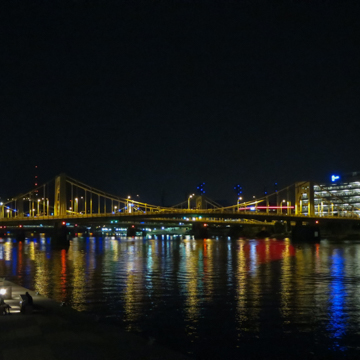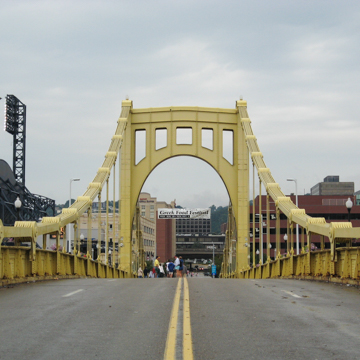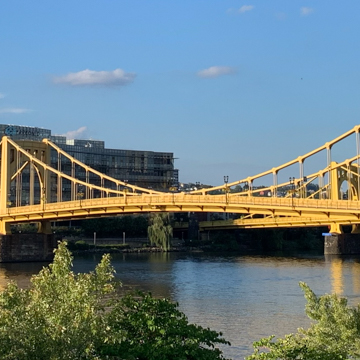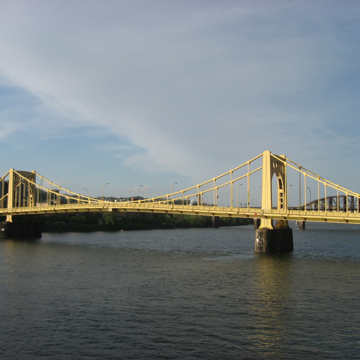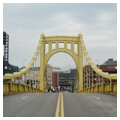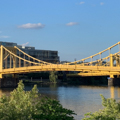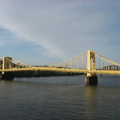The only coordinated set in town, these suspension bridges are particularly pleasing aesthetically and reminders that Pittsburgh played a major role in the history of bridge building. The “Three Sisters” bridges, as they are popularly known, were conceived in 1925 jointly by Pittsburgh's Civic Arts Commission and the Allegheny County Bureau of Bridges when the War Department required higher clearance on the river. These are self-anchored suspension bridges: the anchors to the suspension chains are not buried in the earth but are visible as the box girders separating the roadway from the sidewalks. The resulting structures are light and lyrical, among the best marriages of art and engineering in the country. Their names record three Pittsburghers who were creative in very different fields: baseball (Roberto Clemente Bridge [Sixth Street Bridge]), art (Andy Warhol Bridge [Seventh Street Bridge]), and ecology (Rachel Carson Bridge [Ninth Street Bridge]).
You are here
Three Sisters Bridges
1925–1928, Vernon Covell, and others, engineers; Stanley L. Roush, architect. 6th, 7th, and 9th sts. and the Allegheny River
If SAH Archipedia has been useful to you, please consider supporting it.
SAH Archipedia tells the story of the United States through its buildings, landscapes, and cities. This freely available resource empowers the public with authoritative knowledge that deepens their understanding and appreciation of the built environment. But the Society of Architectural Historians, which created SAH Archipedia with University of Virginia Press, needs your support to maintain the high-caliber research, writing, photography, cartography, editing, design, and programming that make SAH Archipedia a trusted online resource available to all who value the history of place, heritage tourism, and learning.















